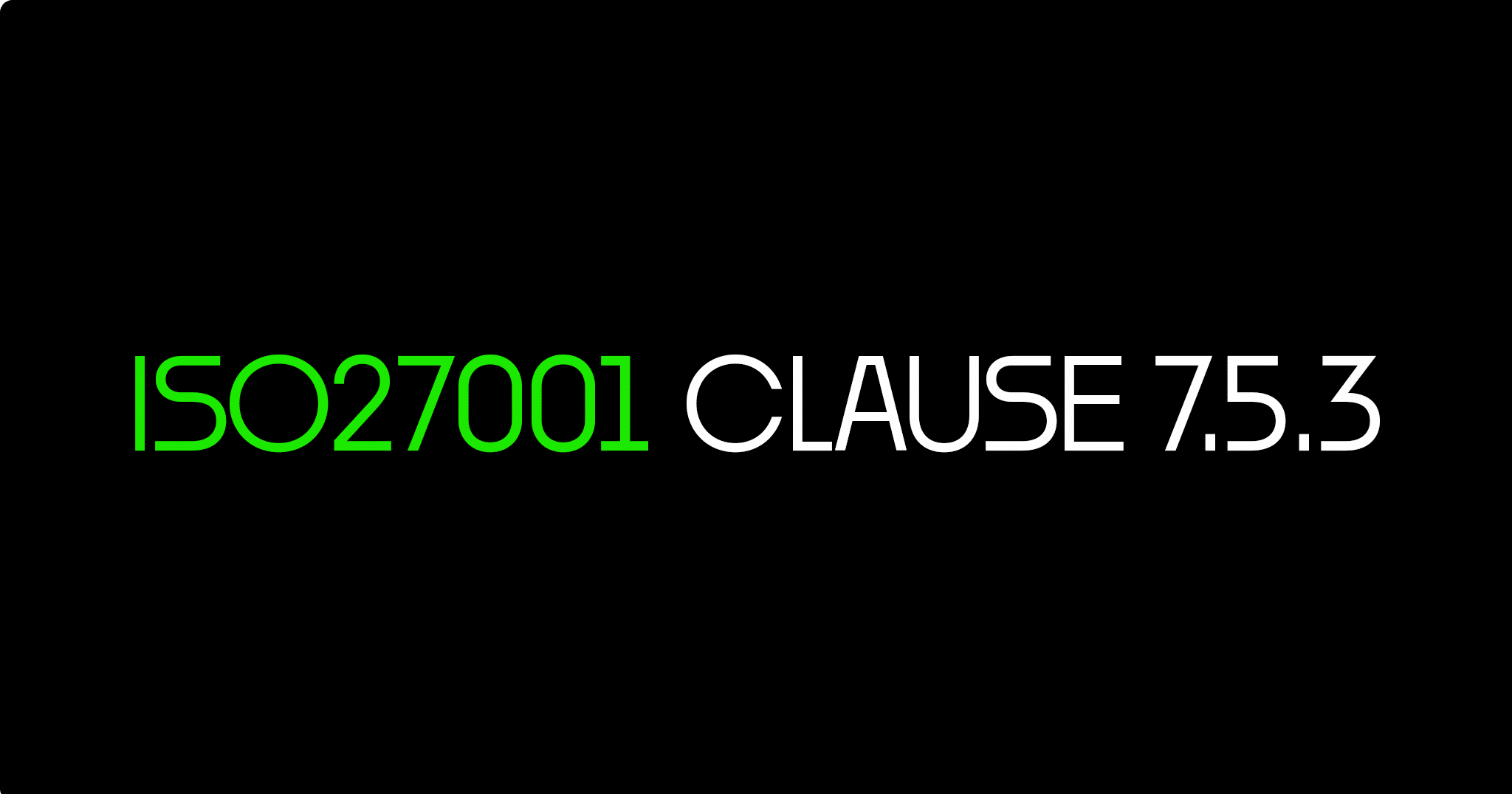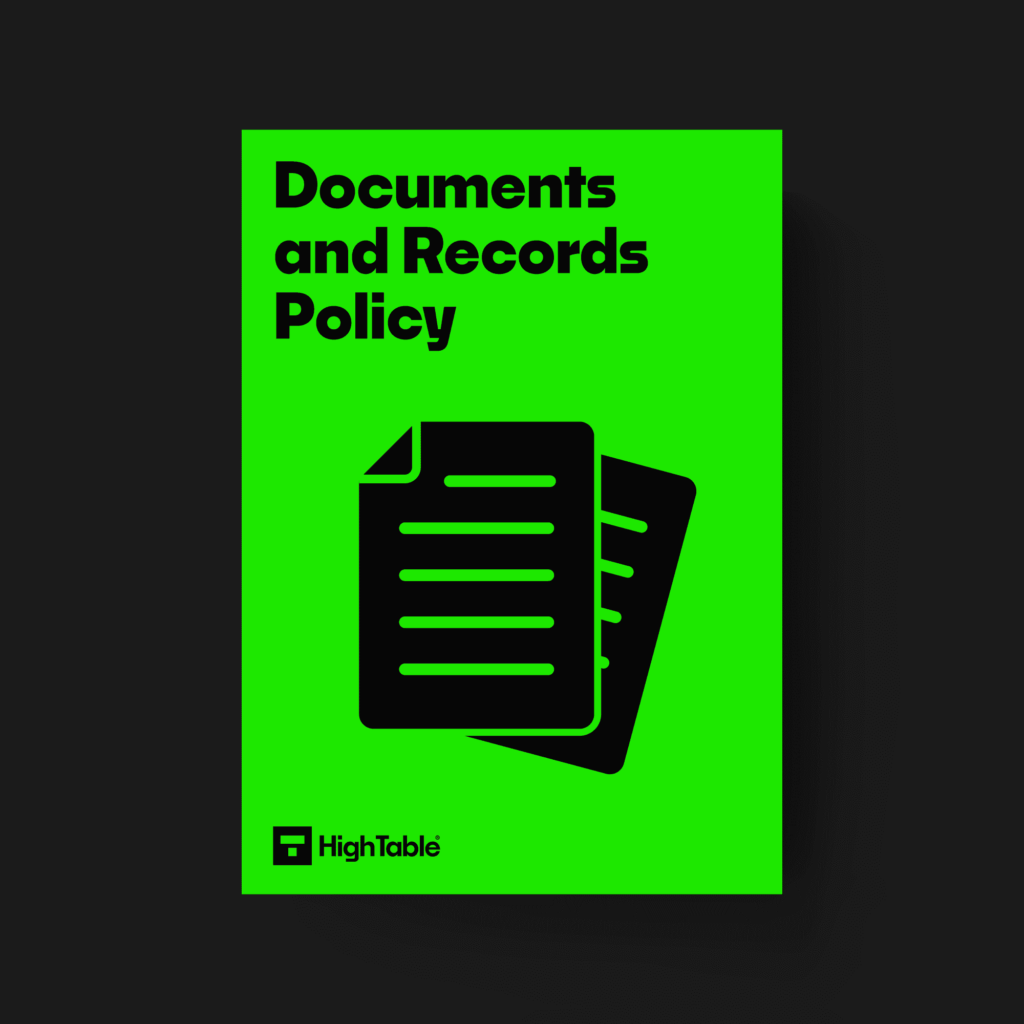Introduction
In this ultimate guide to ISO 27001 Clause 7.5.3 Control of Documented Information you will learn
- What is ISO 27001 Clause 7.5.3
- How to implement ISO 27001 Clause 7.5.3
I am Stuart Barker, the ISO 27001 Ninja and author of the Ultimate ISO 27001 Toolkit.
With over 30 years industry experience I will show you what’s new, give you ISO 27001 templates, show you examples, do a walkthrough and show you how to implement it for ISO 27001 certification.
Table of contents
What is ISO 27001 Clause 7.5.3 ?
The ISO 27001 standard requires that documentation is controlled appropriately. It wants an organisation to document the information security management system, that the documentation is marked up with document markup and that documents are reviewed and approved. It then wants to ensure that those documented are controlled.
ISO 27001 very much works on the premise that if it is not written down then it does not exist. Often the ISO 27001 certification is about the minutia of documentation rather than whether you are actually secure.
ISO 27001 Clause 7.5.3 Control of Documented Information is about ensuring that documents are available as needed are that they are appropriately protected.
The ISO 27001 standard for ISO 27001 certification wants you to document pretty much everything and this approach, and how you do it, is very much in line with ISO 9001. It is one of the ISO 27001 controls.
ISO 27001 Clause 7.5.3 Definition
The ISO 27001 Standard defines clause 7.5.3 as:
Documented information required by the information security management system and by this International Standard shall be controlled to ensure:
ISO 27001 Clause 7.5.3 Control of Documented Information
a) it is available and suitable for use, where and when it is needed; and
b) it is adequately protected (e.g. from loss of confidentiality, improper use, or loss of integrity).
“For the control of documented information, the organisation shall address the following activities, as applicable:
c) distribution, access, retrieval and use;”
d) storage and preservation, including the preservation of legibility;
e) control of changes (e.g. version control); and
f ) retention and disposition.
What are the ISO 27001:2022 Changes to Clause 7.5.3?
Great news. There are no changes to ISO 27001 Clause 7.5.3 in the 2022 update. Where reference was made to the ‘International Standard’ in reference to the document it has been replaced with the word ‘document’.
ISO 27001 Clause 7.5.3 Implementation Guide
There are many ways to document your information security management system.
Some are more efficient and proven than others.
Our ISO 27001 toolkit has been built over 20 years and is used globally by thousands of businesses who want to save vast amounts of time and money.
You may be considering an Information Security Management System online solution. These software solutions can be a great help to information security managers in larger organisations but they come at a massive cost.
Which ever route you go .. document everything. Make sure it is marked up appropriately. Ensure the correct access is in place and ensure you have backups.
Watch the Tutorial
Watch How To Implement ISO 27001 Clause 7.5.3 Control of Documented Information
How to comply with ISO 27001 Clause 7.5.3
Time needed: 1 day
How to comply with ISO 27001 Clause 7.5.3 Control of Documented Information
- Ensure your documents are classified
The classification of documents is very important and covered under other clauses within the standard but now is a good time to provide a place holder for the document classification. This will be used to apply the appropriate level of controls to the document. You control documents in line with your Information Classification and Handling Policy and your Information Classification Matrix.
- Ensure your documents have a version control table
Version control is very important in a document to show the history of that document. Include a version control table in your document template that has columns for the date of the change, how made the change, what change they made and the version number of the document. Include rows in the template as place holders that can be completed.
- Ensure access to your documents is based on role and need
Documents that are for company wide distribution, such as ISO 27001 Policies, should be placed in an area accessible to all staff. Your working papers and confidential documents should have access restricted based on role and who needs that access.
- Ensure you have a data retention policy in place
Have a data retention policy in place and the associated processes that cover how long you keep documents and how you destroy them.
- Backups should be in place
Secure backups of documents should be in place with a backup frequency decided based on the frequency of changes, the needs of the business and the business risks.
- Before you get audited
Check, double check and recheck your documentation before you get audited. The documentation is the primary thing that you will be audited on. Make sure all your version controls are up to date, documents are clean of comments and review mark up, that they have appropriate approvals, appropriate document markup. Ensure that the version control has been touched at least once in the last 12 months before the audit happens. Make sure you can evidence all of the reviews and approvals, that the backups have happened and make sure to check who has access to what. Access control and having old employees or the wrong employees able to access documents is a regular top 5 miss for companies and an easy win for the auditor.
How do you demonstrate compliance to ISO 27001 clause 7.5.3?
You demonstrate compliance to ISO 27001 clause 7.5.3 by having a documented information security management system, documented policies and document records of the effective operation of your processes. This will show you comply with ISO 27001 clause 7.5.3.
But only if those documents include the document mark up required and you can evidence the documents were reviewed and approved.
You need the appropriate document mark up and you need to ensure that they are updated at least within the last 12 months.
You need to ensure access is in place based on role and need. Backups must be in place and evidenced.
ISO 27001 Templates
ISO 27001 templates are a great way to fast track your implementation and leverage industry best practice.
These individual templates help meet the specific requirements of ISO 27001 clause 7.5.3
DO IT YOURSELF ISO 27001
All the templates, tools, support and knowledge you need to do it yourself.
ISO 27001 Clause 7.5.3 FAQ
The ISO 27001 standard requires that documents are controlled to ensure they are available to those that need them and that they are protected.
You evidence compliance to the ISO 27001 Clause 7.5.3 by restricting access to documents based on role and need, ensuring documents that need to be available to people are available and the you have controls in place to protect those documents including backing them up.
You can download ISO 27001 7.5.3 templates in the ISO 27001 Toolkit.
An example of ISO 27001 Clause 7.5.3 can be found in the ISO 27001 Toolkit.
The ISO 27001 documentation templates toolkit can be downloaded in the ISO 27001 Toolkit.
This will depend on the needs of the business and the business risk appetite but for me a daily, weekly and monthly backup is adequate.
Access to the ISO 27001 policies should be given to anyone that works for your organisation and part of a structured training and communication plan.



